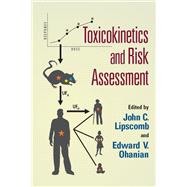| Overview of the Approach to Noncancer Risk Assessment | |
| Guidance for the Development of Chemical Specific Adjustment Factors: Integration with Mode of Action Frameworks | |
| Derivation and Modeling of Mechanistic Data for Use in Risk Assessment | |
| Empirically Observed Distributions of Pharmacokinetic and Pharmacodynamic Variability in Humans-Implications for the Derivation of Single Point Component Uncertainty Factors Providing Equivalent Protection as Existing RFDs | |
| Use of Classical Pharmacokinetic Evaluations in Drug Development and Safety Assessment | |
| Considerations for Applying Physiologically Based Pharmacokinetic Models in Risk Assessment | |
| Considerations of Design and Data when Developing Physiologically Based Pharmacokinetic Models | |
| In Silico Predictions of Partition Coefficients for Physiologically Based Pharmacokinetic Models | |
| In Vitro to In Vivo Extrapolation of Metabolic Rate Constants for Physiologically Based Pharmacokinetic Models | |
| Use of Physiologically Based Pharmacokinetic Modeling to Evaluate Implications of Human Variability | |
| Developmental Aspects of Children's Pharmacokinetics | |
| Sensitive Populations and Risk Assessment | |
| Statistical Issues in Physiologically Based Pharmacokinetic Modeling | |
| Drug Development and the Use of Pharmacokinetics/Toxicokinetics in Selecting the First Dose of Systemically Administered Drugs in Humans-A Nonclinical Perspective | |
| Pharmacokinetic/PBPK Models in IRIS Assessments | |
| Table of Contents provided by Publisher. All Rights Reserved. |









